Occupations of the People of Martham before 1800
I am most grateful to Ann Meakin for providing the fascinating information for this page.
A study of some of the occupations of the people of the Parish of Martham in the Hundred of West Flegg in the County of Norfolk before 1800
By Ann Meakin February 2007. N.B. This has been abbreviated and adapted for this website.
The village of Martham is situated on the northern edge of the former Isle of Flegg at a distance of nine miles from Great Yarmouth, the nearest town, and of 18 miles from the City of Norwich.
Martham was an open parish, which by 1800 had over 100 ratepayers and in addition possibly more than a dozen households too poor to pay rates. It was a parish where most of the people were employed in agriculture, farming varying acreages of land which they owned copyhold or freehold, but there were also a number of people with special skills and yet others who rented their property and found employment wherever they could. My intention was to discover how people earned a living, where people learned their skills and whether they passed them on.
In order to discover the occupations followed by Martham people prior to 1800, my first and most useful source of information was the ‘Norwich Peculiar Jurisdiction Index to wills and other probate records’ as until 1857 Martham was a ‘Norwich Cathedral Peculiar’. Wills had to be made if a person’s possessions were likely to be of £5 or more in value. Most of the wills were made by clergy, gentlemen, yeomen, husbandmen, spinsters or wealthier widows, however a small number were made by other people whose occupation was recorded. In addition a few inventories survive. I found three of craftsmen and one of a fisherman.
It was not until the latter part of the eighteenth century that in the Burial Register there are regular records of a person’s occupation.
The specialised occupations that I have discovered are listed in Tables 1 to 7, where I have also added as much information as I have been able to find about the people who followed them.
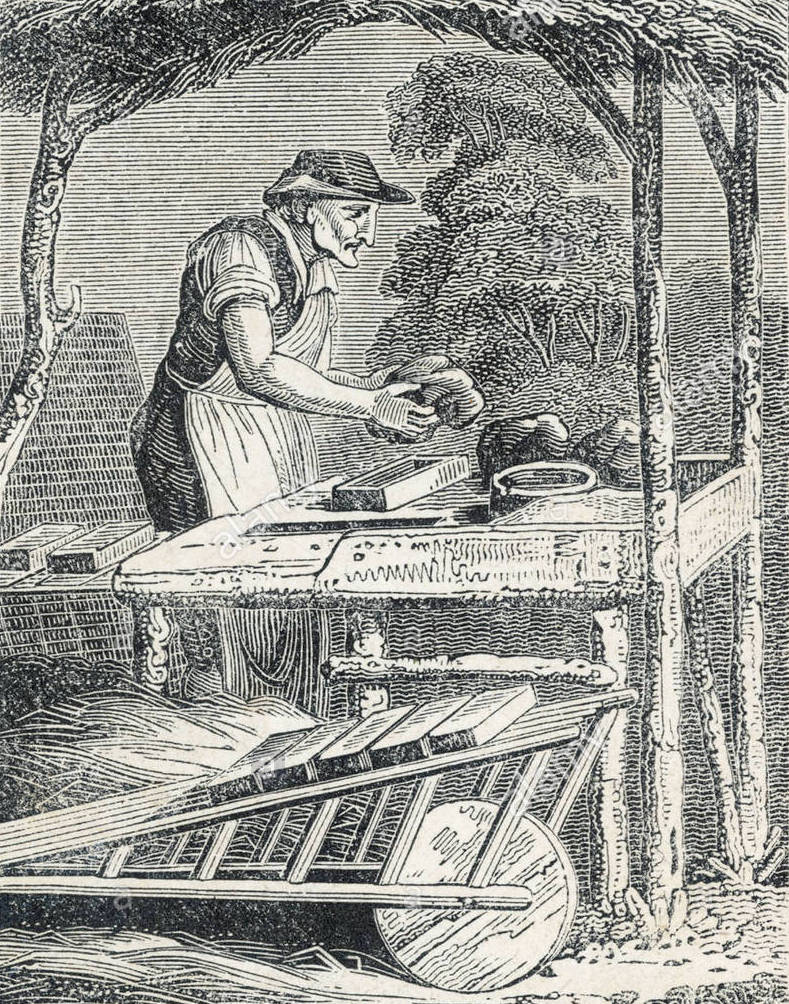
Building workers (see Table 1.) would have been employed in Martham from time immemorial. The few houses surviving from the 1500s although much altered are a testimony to the fine craftsmanship of those in that century who are the earliest known by name. Carpenters would have had a hand in making these timber-framed houses which were thatched with reeds cut from the local marshes. In later centuries brick replaced many of the timber framed walls but the Tudor brick chimney stacks remain. Brick was made on The Common before the Enclosure of 1812.
The only work in the village obviously available for masons would have been on maintenance to the church which was completed in the fifteenth century. The rough mason may have built many of the flint walls which can be seen in the oldest parts of the houses that had later brick extensions, and on the construction of the churchyard wall. I wondered whether it is possible that the masons were also bricklayers or builders of clay lump houses. Around the village there are several very fine threshing barns of English bond brickwork that must have been erected in the seventeenth century and also two fine houses survive. Did travelling bricklayers build them?
Some of the carpenters may also have been joiners. The inventories that I have read in the Overseers’ Account Book indicate that even the poorest households had basic furniture, that is, tables, stools and bedsteads.
The farmer /glazier may be an example of how in a pre-industrialised society people supplemented their incomes from agriculture.
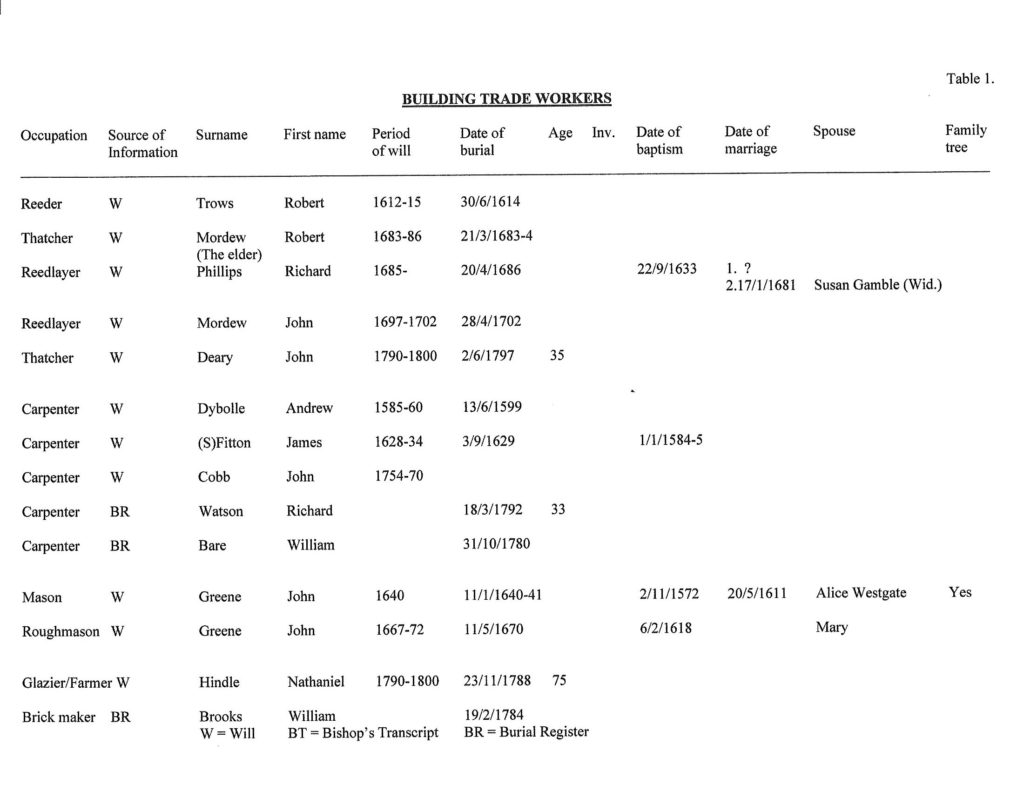
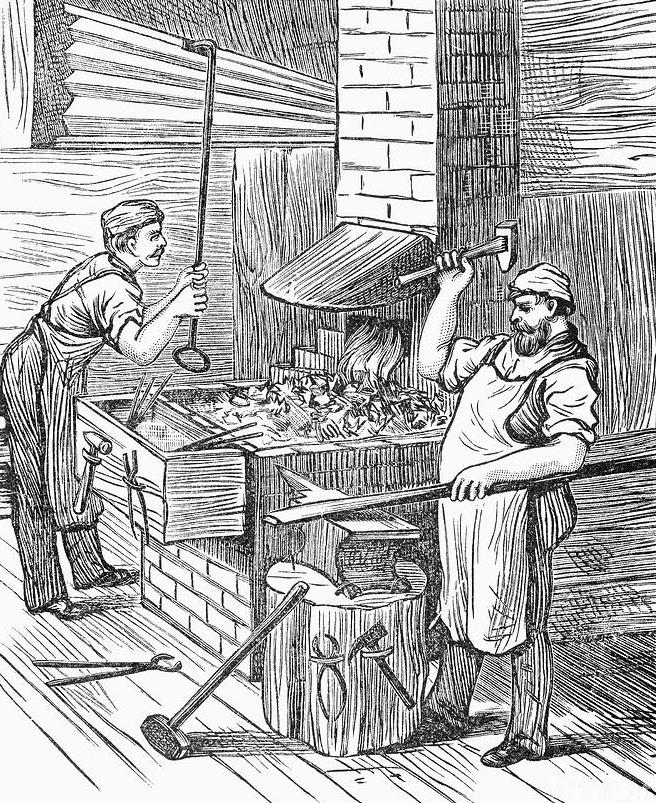
Of the metal and wood workers, (see Table 2) those who worked as blacksmiths were craftsmen who were absolutely vital to the community as other craftsmen depended on them to make their tools and equipment. It is therefore not surprising that there are several records of them. Fortunately the inventories have survived of the possessions of two of the blacksmiths.
That of William Westgate indicates that he could make a wide range of articles from nails to farming implements. It does not mention any farming equipment, so he must have worked exclusively as a blacksmith. See Appendix 2.
After his death it is possible that there was not a blacksmith working in the parish as William Whittaker was allowed to settle in Martham in 1728 with his family and work as a blacksmith. A copy of the inventory made after his death is in Appendix 3. The inventory provides evidence that he was also engaged in farming.
Coopers did an essential job in making vessels large and small for holding milk and beer.
I am not sure whether the carver worked in wood or stone.
Working as a wheelwright would have been difficult without having a blacksmith in the locality to make the nails and other metal objects that were needed for the completion of his wheels and wagons. The wheelwright and one of the blacksmiths appear to have been contemporary workers.
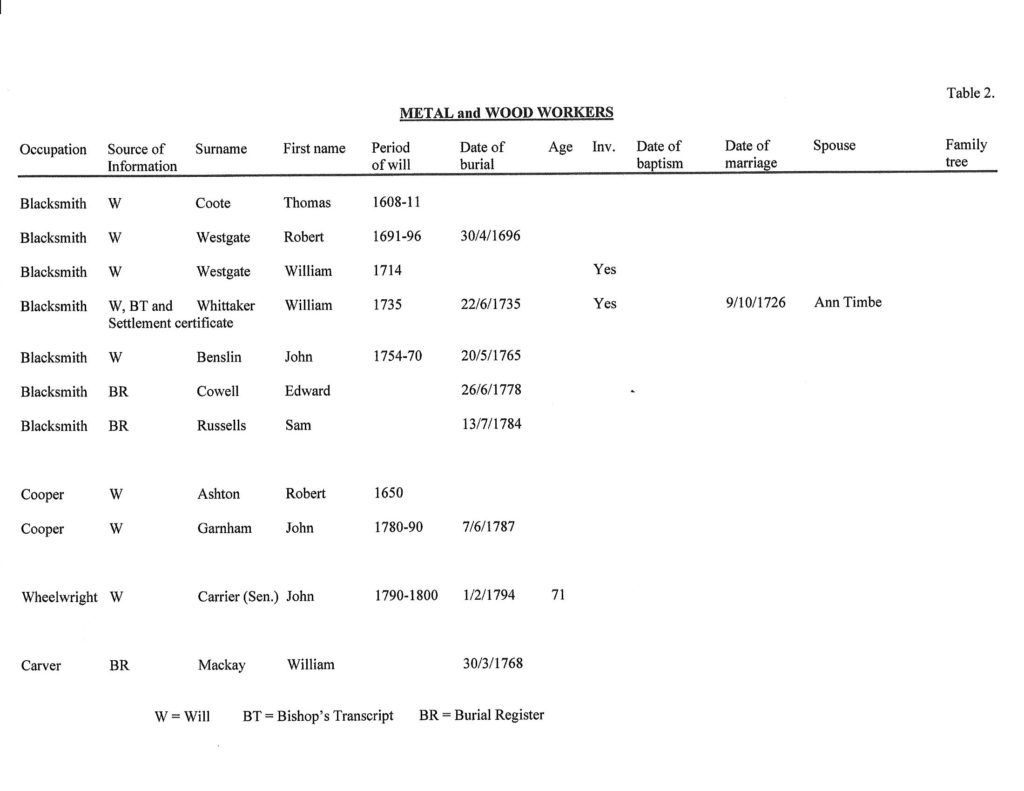
For those who worked in the leather and textile trades see Tables 3 and 4.
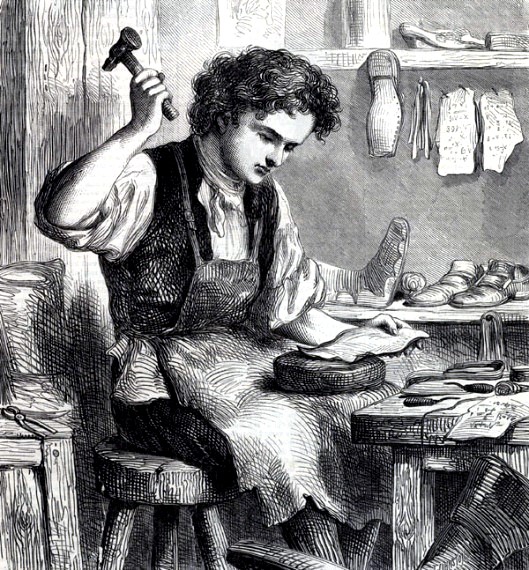
There would always have been a demand locally for the cordwainers’ and shoemakers’ skills in the making of footwear. William Hall the younger, the inventory of whose possessions survives, was totally reliant for his living on his trade, yet had very little in the way of tools and stock. See Appendix 4.
The collar maker was making the collars worn round their necks by farm horses. It was an important part of a horse’s harness and needed to be a comfortable fit for the well being of a horse employed in heavy work.
To find a currier working is interesting because the nearest places that I have found with tanneries are Caister-on-Sea and Ludham. Was he dressing the leather for the glover? I wondered whether the gloves being made were for workers because before 1800 very few people living locally even among the wealthier farming families were not working people.
Some of those who worked in the leather and textile trades, the weavers, currier and glover may have been examples of people employed under the ‘Putting-out’ system whereby rural workers would be supplied with raw materials by merchants who later bought their finished products and sold them on, on an entrepreneurial basis.
That a merchant and woollen drapers lived in the Parish suggests that this could have been the case. The sort of yarn the spinsters were spinning is unknown. I have not found evidence that flax was grown in Martham. They may have spun wool supplied to them, as sheep were not part of the economy of Flegg at that time.

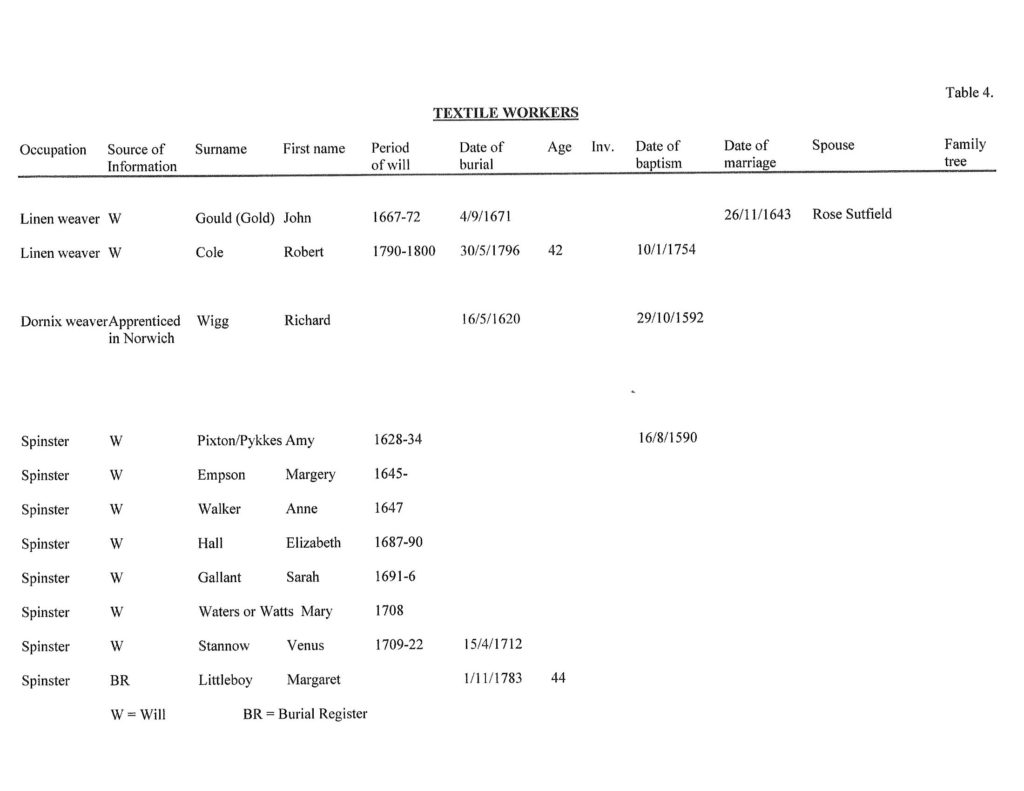
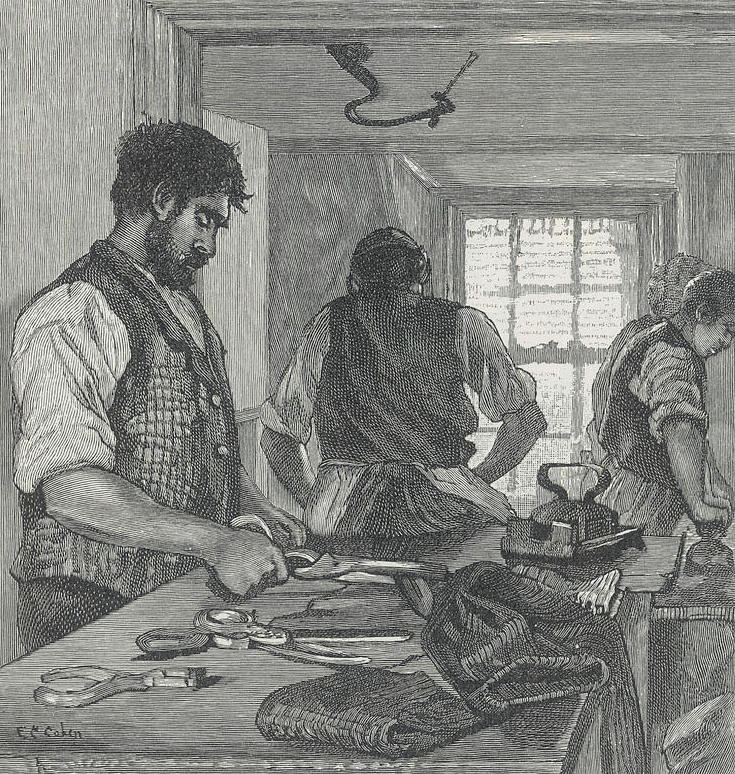
The number of tailors recorded (see Table 5) indicates that there was always a need for their craft. Here is an example of a son following his father in his trade. William Creasey (1636-1712) was the son of Richard (1602-1678); therefore it is very likely that he learned his skill at home. They were an intelligent family. William’s son William probably becoming the schoolmaster.
Woollen drapers were dealing in woollen goods and could have been supplying cloth to the tailors.
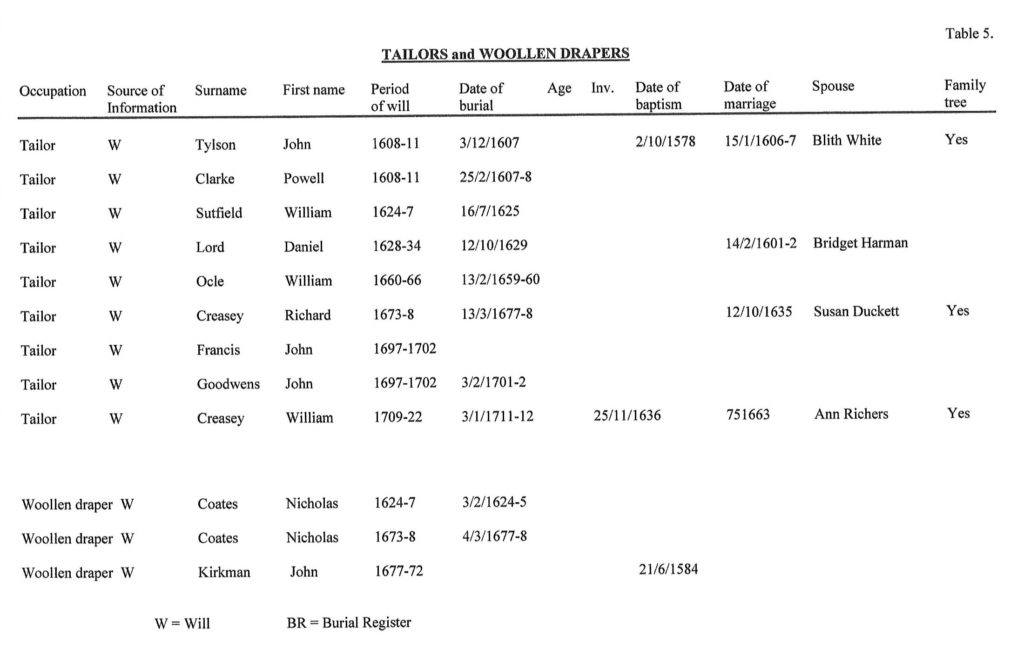
Table 6. With the number of households in Martham steadily increasing by 1800, there was obviously a potential market for the consumption of food and drink and countless other commodities. (See Table 6.)
There was from very early times a windmill on the high ground to the east of the village, providing employment for a miller to grind the cereals grown on the vast arable fields of the parish. Cattle were pastured on the extensive areas of common land alongside the River Thurne, but I think many of these may have been being fattened for markets elsewhere. From reading inventories one gathers that pigs, geese and chickens were kept which were more likely for local consumption and provided the butchers with work.
Whether the fisherman worked on the rivers of the Broads, fishing for eels or pike, or at sea is not known. From his possessions listed in the inventory made after his death, it seems that he was also a farmer.
Finding a record of a shopkeeper in Martham is exciting. He would have been selling goods supplied by wholesalers. (Was Thomas Rising the Martham equivalent of Thomas Turner of East Hoathley in Sussex? He also held the offices of churchwarden and overseer.) This is another example of an enterprising farmer. The Rising family had been Yeomen farmers in Martham for almost two centuries. Here we find James Slegg marrying Thomas’ daughter and continuing the business.

From the eighteenth century onwards there are records of there being a public house in Martham – built by Lacons Brewery and requiring a publican.
There are no further details of the sort of enterprise that the merchantwas involved in or of the business of the tallow chandler, except that he would have been dealing in tallow candles which would have been a valuable commodity in every household that could afford to buy them.

Table 7 lists other occupations that I have found. It illustrates the increasing diversity of employment in the parish.
The boatman may have had a wherry on the River Thurne which at that time was the main transport route for heavy goods.
The carrier would have been carrying small goods by road to other local villages.
From the names of the Parish Clerks I think they were local men who had been fortunate to be educated at the charity school set up in Martham in the late 17th century as a result of the bequests of Christopher Ames (1622) and others. The Vicar and Churchwardens were trustees of the ‘Endowed Non-classical school’ with the schoolmaster being mentioned in the Terriers of the Church’s possessions.
Records show that the barber did return to Martham but I could find neither a record of his burial or a will.
Why two labourers were wealthy enough to make wills I have yet to discover.
The gardener may have been growing fruit, vegetables and herbs for local people. I think it is unlikely that even the grander households would have had flower gardens.
The dog whippers would have been paid by the churchwardens to control the dogs taken into church services by farmers, if they created a disturbance.
Having studied these occupations of Martham people I regret to say that I have been able to discover where only a few workers learned their skills and whether they passed them on.
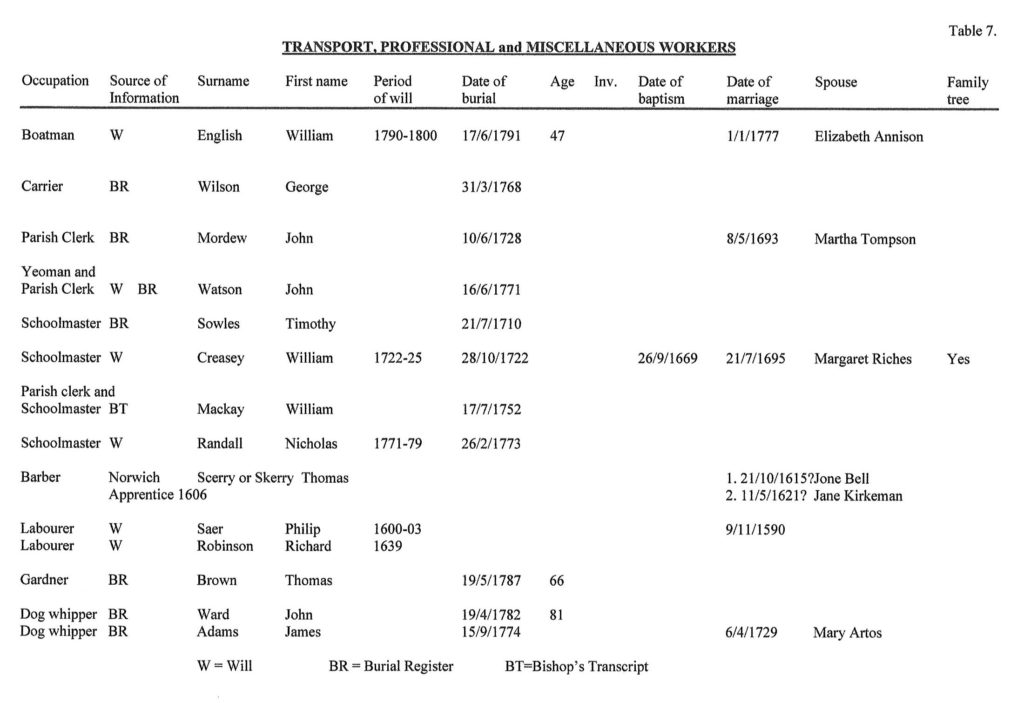
It is possible that some were indentured apprentices, but their documents have not survived. I also wondered whether the regulations regarding apprenticeships were enforced in rural areas. Some may have passed their skills through family links even though they may not be father to son except in rare cases. Those whose apprenticeships are recorded in Yarmouth and Norwich seem to have been sons of the wealthier and their apprenticeship, a passport to a more prosperous town life. See Appendix 7. With the Parish Registers being incomplete, unreliable and partly illegible, it is impossible to say how many of the people studied were born in the parish. If someone had moved because a job was available, the question arises whether he had to have a settlement certificate in order to do that. Studying the registers in order to locate people’s records has been fascinating. I have been able to create several family trees that have produced some interesting revelations. This is just the beginning of a most interesting and worthwhile study.
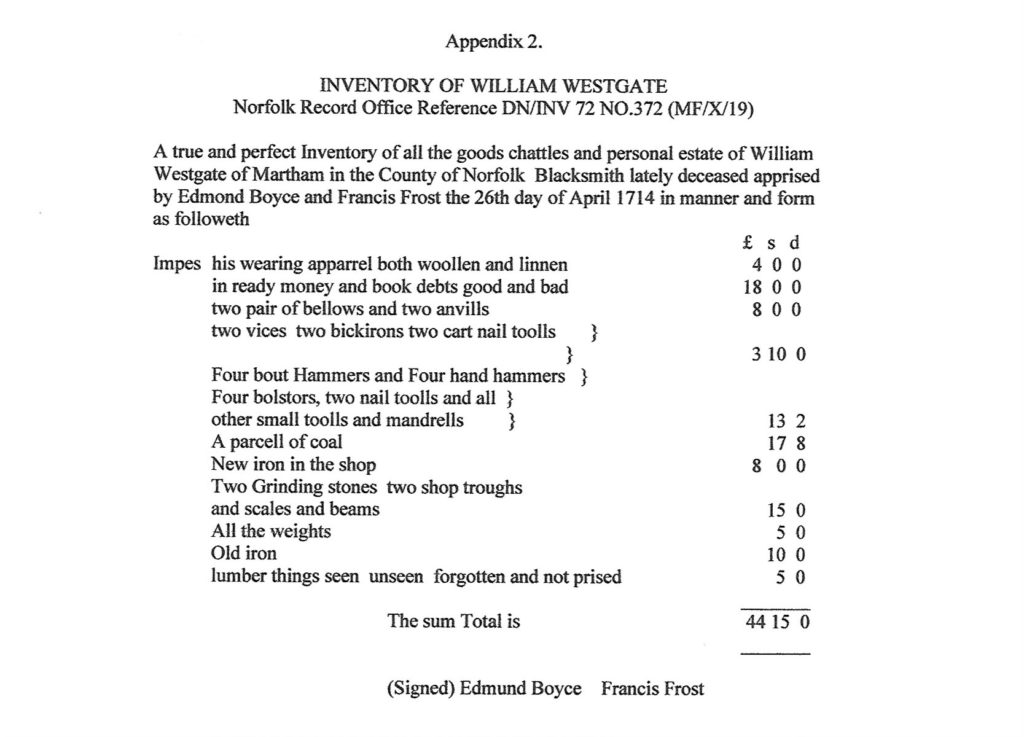
———————————————–
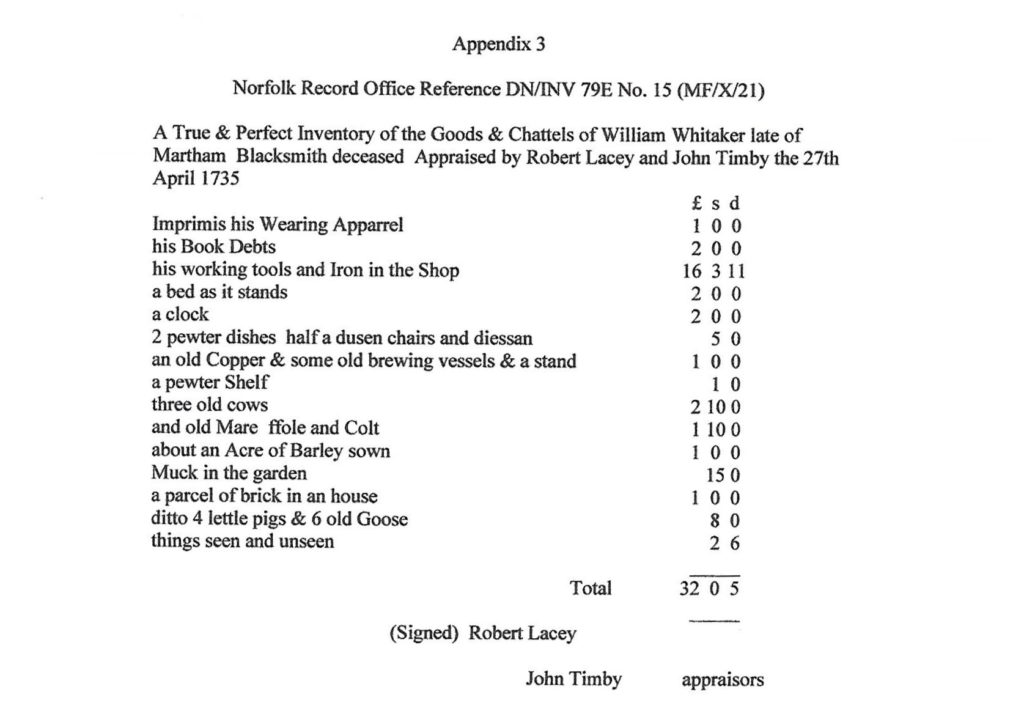
—————————————————

Appendix 7.
MARTHAM MEN APPRENTICED AT GREAT YARMOUTH
1. Robert Foulsham the son of Robert Foulsham Clerk deceased of Martham was apprenticed to Bartholomew Richardson, Shipwright of Yarmouth for seven years from 29th September 1611. He was the son of the Vicar of Martham who died in 1603.
I can find no further trace of Robert Foulsham in the Martham Registers.
2. Thomas Taplyn the son of Robert Taplyn of Martham was apprenticed to Henry Biddle cordwainer a freeman for eight years from 22nd February 1630.
The list of people apprenticed at Great Yarmouth recorded in ‘Norfolk Genealogy Volume XI. Great Yarmouth Apprenticeship Indentures 1563 – 1665’ is incomplete because there was no obligation for apprenticeships there to be registered. It was a safeguard in the event of indenture documents being lost. I found just these two young men from Martham whose apprenticeships were recorded. Neither of them appears again in the Martham registers.
MARTHAM MEN APPRENTICED AT NORWICH
From ‘An index of Norwich Apprentices enrolled with the Norwich Assembly between the reigns of Henry VIII and George II’, I found five apprentices who were sons of Martham people.
1. John Collyson son of [?] Collyson of Martham was apprenticed to William Stephenson of Norwich – Blacksmith – for seven years from the 27th year of Queen Elizabeth [1585] for seven years. I could find no further convincing evidence about him because there were various spellings of his surname.
2. Robert Hanoke son of John Hanoke of Martham was apprenticed to John Cooke of Norwich worstead weaver for seven years from the 5th year of Edward VI [1552] for 7 years. His surname is spelt in varying ways – Hammott, or Hannot – making it difficult to be sure that I have found details of the correct person. It is possible that he returned to Martham and was married to Blythe who bore him two children in 1560 and 1561 however I could find no trace of his death or a will.
3. Joseph Norgate the son of Matthew Norgate of Martham (Gentleman) was apprenticed to Thomas Barloe of Norwich worstead weaver from 1698 for seven years. Joseph who was baptised on the 10th February 1683-4 was the sixth child and third son of Matthew Norgate. Following his apprenticeship I could find no records that he ever returned to Martham or that he become a freeman of Norwich.
4. Thomas Skerry or Scerry the son of Thomas of Martham was apprenticed to John Carre of Norwich a barber for eight years from 1606. He may have returned to Martham if so, in the records his surname is spelt ‘Scotto’.
5. Richard Wigg the son of Dannell Wigg a husbandman was apprenticed to Simon Mosse of Christchurch in the County of the City of Norwich a dornix weaver for eight years from the 3rd year of James [1606]. Richard was the third son. The older boys died in infancy and the death is recorded of a Richard Wigg a single man on the 16th May 1620.
SOURCES OF INFORMATION
The Registers of Baptisms, Marriages and Burials in the Parish of Martham. These are held at the Norfolk Record Office under references PD 710/1,3 and 7 (N.B. The registers were not kept between 1728 and 1758. A few Bishop’s Transcripts survive.)
Transcriptions of the Martham Parish Registers made by members of the Norfolk Family History Society
Martham churchwarden’s accounts from 1745 – 1848 Norfolk Record Office Ref. PD710/64
Martham overseer’s accounts from 1744 – 1785 Norfolk Record Office Reference PD710/68
Martham Church Terrier of 1716 Norfolk. Record. Office Reference – DN/TER 101/1/8
Millican, Percy ‘Freemen of Norwich 1548 – 1713’ published by Jarrold and Sons Ltd 1934
‘Norfolk Record Society Volume XXIX – An index of Norwich Apprentices enrolled with the Norwich Assembly Henry VII – George II – edited by Percy Millican
‘Norfolk Genealogy Volume XI – Great Yarmouth Apprenticeship Indentures 1563 – 1665’ published by the Norfolk Record Society
‘Norfolk Genealogy Volume 16 – Norfolk Peculiar Jurisdiction Index to wills and other probate records’ for the period between 1600 and 1857’ published by The Norfolk Record Society
An Historical Atlas Of Norfolk edited by Peter Wade-Martins published by Norfolk Museums Service 1993
Coleman DC ‘Industry in Tudor and Stuart England’ published by The Macmillan Press Ltd 1975
Hey, David ‘The Oxford Dictionary of Local and Family History’ published by Oxford University Press 1997
Lucie-Smith, Edward ‘The Story of Craft The Craftsman’s Role in society’ published by Phaidon Press Ltd 1981
Millican, Percy ‘Freemen of Norwich 1548 -1713’ published by Jarrold and sons Ltd. 1934
Priestley, Ursula ‘The Fabric Of Stuffs the Norwich textile industry from 1565’ published by The centre of East Anglian Studies 1990
Priestly, Ursula and Fenner, Alayne ‘Shops and shopkeepers in Norwich 1660-1730 published by The Centre of East Anglian Studies
Richardson, John ‘The Local Historian’s Encyclopaedia’ published by Historical Publications Ltd. 1993
Turner, Thomas ‘The Diary of a Georgian Shopkeeper’ a selection by R.W.Blencoe and M.A.Lower Second Edition Published by Oxford University Press 1979
Wymer Norman English Country Crafts – B T Batsford Ltd. 1946
Yaxley, David Compiler of ‘A Researcher’s Glossary of words found in historical documents of East Anglia’ published by The Larks Press 2003.